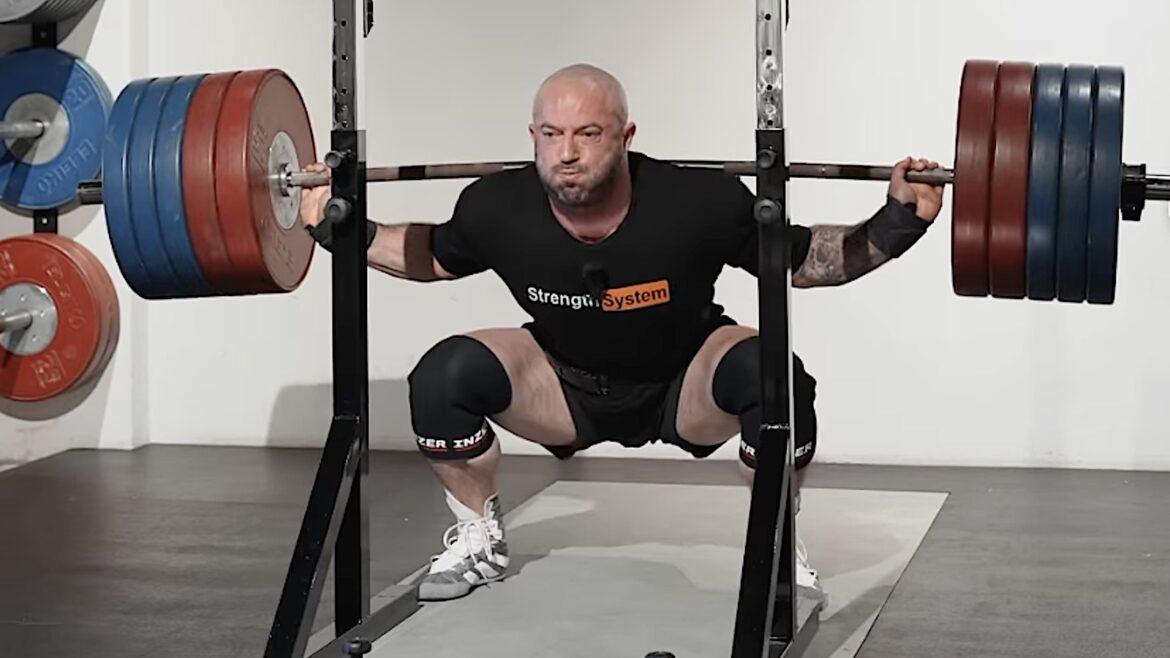What it is, why it happens, and when you should actually worry about it.
Though the quads and glutes often gain the spotlight during a squat, chasing depth and maxing out lifts are often stalled by mechanical problems even when strength is not a concern. The “butt wink” is one such issue.
Butt wink happens when the pelvis tucks under at the bottom of a squat, causing the back to round, applying stress to the lower back. Australian Strength Coach Sebastian Oreb shared three tips to fix your butt wink.
When we butt wink, we’re beyond what our mobility allows.
—Sebastian Oreb
The Butt Wink Dilemma
Whether the butt wink is that bad depends on who you ask. Oreb noted some individuals dismiss its risky nature and suggest the spine can adapt through training. (1)
Others caution that bunk winking stresses the hip flexors and lower back due to repetitive flexion and rotation under load. (2) A posterior pelvic tilt can impact energy conservation necessary for bigger lifts.
When you posteriorly tilt in a squat, it is considered an energy leakage.
—Sebastian Oreb
That loss of energy can be costly in powerlifting. Athletes must achieve proper depth for the lift to count in competition. With hundreds of pounds pressing against the spine, minimizing lumbar stress ensures sustainable progress and longevity. (3)
“In a powerlifting competition, they don’t care about butt wink or posture or structure,” Oreb explained. “They care about a standard: the crease of the hip must be below the top of the knee.”
3 Butt Wink Fixes for Powerlifters
- Brace for Strength
- Stance for Depth
- Footwear for Stability
[Related: 3 Pro Powerlifting Tips to Build a Bigger Squat]
Bracing with a neutral pelvis, Oreb follows the “ribs down, piss up a wall” cue to lock in his core for heavy squats. This memorable imagery helps illustrate that when standing facing a wall, the body naturally shifts into a slight posterior pelvic tilt to flatten the lower back and engage the core.
To hit depth without compromising form, position the feet just outside of hip width with the toes slightly pointed out.
Pushing the knees out during squats helps hip abduction and hip flexion, allowing for a deeper range of motion (ROM) without triggering a butt wink. Though ROM can depend on a person’s structure, a taller squatter with longer femurs might need to widen their stance or slightly adjust foot angle to achieve depth without sacrificing form.
Heel elevation influences stability and can help maintain a neutral spine. (4) Weightlifting shoes help lifters focus on execution without being overburdened by stability demands.
More Powerlifting Content
References
- Tallent J, Woodhead A, Frazer AK, Hill J, Kidgell DJ, Howatson G. Corticospinal and spinal adaptations to motor skill and resistance training: Potential mechanisms and implications for motor rehabilitation and athletic development. Eur J Appl Physiol. 2021 Mar;121(3):707-719. doi: 10.1007/s00421-020-04584-2. Epub 2021 Jan 2. PMID: 33389142. https://pubmed.ncbi.nlm.nih.gov/33389142/
- Kuhns BD, Kahana-Rojkind AH, Parsa A, McCarroll TR, Sikligar D, Domb BG. Posterior Pelvic Tilt Allows for Increased Hip Motion, While Anterior Pelvic Tilt Decreases Joint Stress: A Systematic Review of Biomechanical and Motion Analyses. Arthroscopy. 2025 Feb 26:S0749-8063(25)00142-2. doi: 10.1016/j.arthro.2025.02.021. Epub ahead of print. PMID: 40021069. https://pubmed.ncbi.nlm.nih.gov/40021069/
- Yanagisawa O, Oshikawa T, Adachi G, Matsunaga N, Kaneoka K. Acute effects of varying squat depths on lumbar intervertebral disks during high-load barbell back squat exercise. Scand J Med Sci Sports. 2021 Feb;31(2):350-357. doi: 10.1111/sms.13850. Epub 2020 Oct 22. PMID: 33038028. https://pubmed.ncbi.nlm.nih.gov/33038028/
- Sayers MGL, Bachem C, Schütz P, Taylor WR, List R, Lorenzetti S, Nasab SHH. The effect of elevating the heels on spinal kinematics and kinetics during the back squat in trained and novice weight trainers. J Sports Sci. 2020 May;38(9):1000-1008. doi: 10.1080/02640414.2020.1738675. Epub 2020 Mar 17. PMID: 32183616. https://pubmed.ncbi.nlm.nih.gov/32183616/
Featured image: @australianstrengthcoach on Instagram
